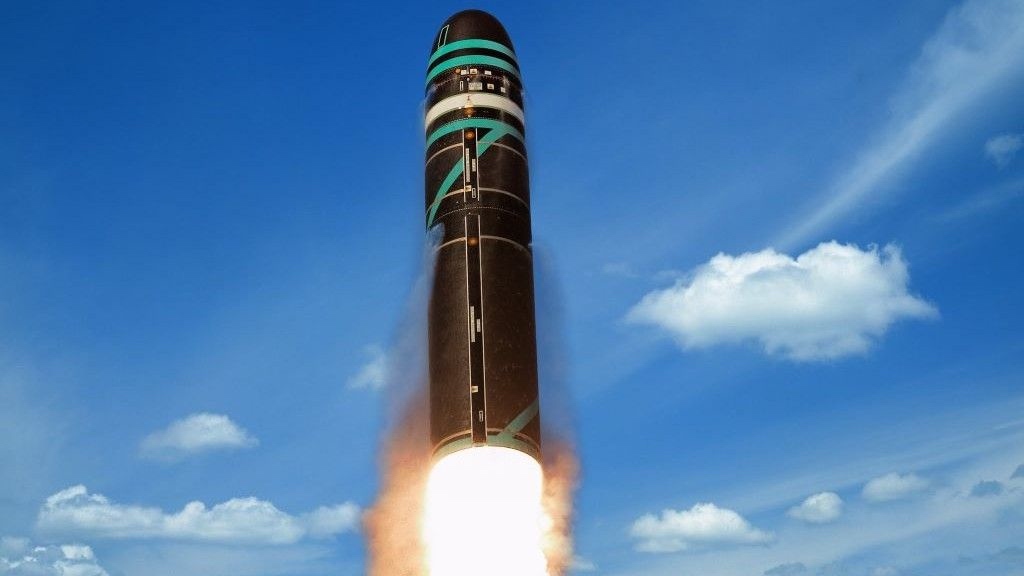France has quietly advanced its nuclear deterrent in a way that will reverberate far beyond the Atlantic. On 28th October 2025 the French Ministry of the Armed Forces confirmed the deployment of the third version of its strategic submarine-launched ballistic missile: the M51.3.
This development marks a significant milestone in Paris’s drive to sustain credible second-strike capability in an era of renewed great-power competition.The M51.3 brings “new nuclear warheads as well as improved range, accuracy and capability to penetrate enemy defences,” according to official French sources reported by DefenceNews.
In essence, the upgrade is not simply an incremental hardware refresh: it is a statement of intent—France’s commitment to preserving its autonomous nuclear deterrent in a world where missile-defence systems are proliferating. According to industry data, the missile’s range now exceeds 9,500 km — up from more than 9,000 km for the preceding version. It is reported to carry four-to-six MIRVs (multiple independently-targetable re-entry vehicles) with yields believed near 100 kilotons each. That places each payload at more than six times the destructive power of the bomb dropped on Hiroshima in 1945.
The timing is telling. The upgrade comes amid what the Stockholm International Peace Research Institute has called a “dangerous new nuclear arms race,” as almost all the nuclear powers modernise their arsenals. For France, the calculus is clear: adversaries such as Russia and perhaps China are enhancing their anti-ballistic-missile and intercept capabilities. If French deterrent missiles become vulnerable to interception, then the credibility of the deterrent collapses.
From Paris’s perspective, the ocean-based component of the triad must remain resilient. The four ballistic-missile submarines of the Le Triomphant‐class (each equipped with 16 such missiles) are the backbone of the policy of continuous at-sea deterrence. The M51.3 strengthens that backbone.
There is a political dimension too. France insists that its nuclear forces remain outside the direct command of North Atlantic Treaty Organization — part of its long-standing doctrine of strategic autonomy. By pressing ahead with the M51.3, Paris signals that it will not rely solely on allied umbrella defences but intends to deter independently.
At the same time, co-ordination between the UK and France on nuclear deterrence has grown; earlier this year the two countries agreed to deepen collaboration. That raises questions about how national autonomy will coexist with allied interoperability when deterrent stakes are rising.
The upgrade is also a showcase of French defence industry capability. The missile design and propulsion tasks are handled by ArianeGroup; the warhead by the Commissariat for Atomic Energy and Alternative Energies; the procurement and oversight by the Direction générale de l’armement. Work on the M51.3 began in 2014, with warhead development starting in 2013. Defense News That long lead-time reflects the complexity of modern strategic weapons programmes and the political will required to sustain them.
Moreover, France has already commenced work on the next-generation submarine (the SNLE 3G) to replace the Le Triomphant class in the 2030s and operate well into the 2080s. In parallel, the air-launched component of the nuclear triad will be upgraded via the hypersonic missile ASN4G carried by future fighters. In short: France is mobilising for the long term.
What does this mean for Europe? First, it underlines that nuclear deterrence remains current — not a relic of the Cold War. A modern European power is investing in the ultimate weapons of war as part of its security architecture. That fact will shape debates on European defence, NATO burden-sharing and strategic thinking.
Second, it serves as a wake-up call for other continental states: deterrence is not just about numbers but about credibility, survivability and autonomy. If France, with its relatively modest arsenal, opts for such extensive investment, others may feel pressure to follow—or to find alternative routes to ensure their security.
Finally, it raises the question of transparency and arms control. While France remains compliant with the New START Treaty (via the UK-US-Russia framework), the introduction of a new strategic missile in Europe invites scrutiny. Will this renewal encourage fresh dialogue—or accelerate the slide toward competition?
In deploying the M51.3, France sends a clear message: its nuclear deterrent remains central to national security and to European strategic stability. But this renewal comes at a cost — fiscal, diplomatic and ethical. In a world of rising tensions and renewed strategic rivalry, Paris has chosen to hedge its bets on its own endurance rather than rely exclusively on alliance frameworks. For Europe, the message is plain: the age of nuclear complacency has ended.
If illusions of strategic calm persist on the continent, they have this French upgrade to shatter them.
Main Image: Ariane Group
This Article Originally Appeared At DEFENCE MATTERS.EU
Click here for more News & Current Affairs at EU Today
________________________________________________________________________________________________________________________


